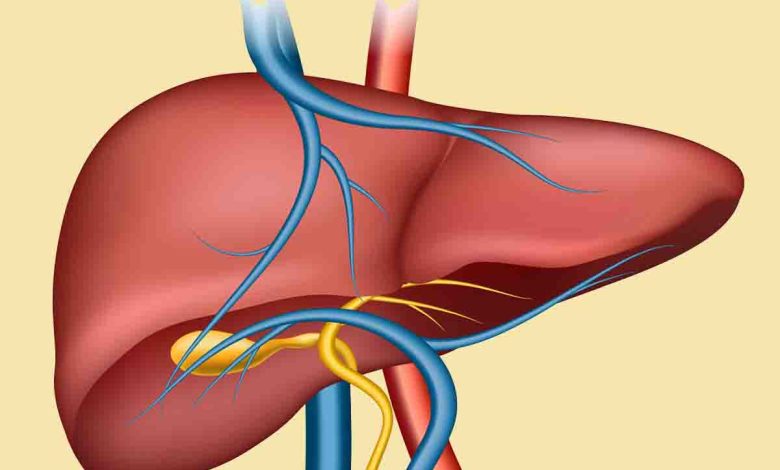Care for your liver to live well

Saturday, 30 July 2022 | Dr Gaurav Sanjay | Dehradun
GUEST COLUMN
 Dr Gaurav Sanjay
Dr Gaurav Sanjay
As in past years, World Hepatitis Day was observed on July 28 to bring the world together to raise awareness of the global burden of viral hepatitis. Hepatitis is an infection of the liver which can be self-limiting or progress to liver cirrhosis or liver cancer. Hepatitis is a major public health disease which affects the liver- a body organ important for maintaining almost all metabolic activities. One cannot lead a healthy life without normal liver function. Viral hepatitis is the commonest cause of liver infection. Hepatitis virus is of five types- hepatitis A virus (HAV), B virus (HBV), C virus (HCV), D virus (HDV) and E virus (HEV).
Hepatitis A and E spread mainly through contaminated food and water or hepatitis B and C that spread by body fluids, blood transfusion, use of infected needle and syringe, and through mother to child transmission during early childhood.Outbreak of acute and fulminant hepatitis B still occur mainly due to inadequately sterilised needles and syringes which is demonstrated by the recent outbreak of hepatitis B in Gujarat. It is more in Asian and African countries probably due to prevailing low socio economic conditions leading to poor hygiene and sanitation. Population prevalence of chronic HCV infection in India is about one per cent. According to the National Centre for Disease Control, the population prevalence of chronic HBV infection in India is about 3-4 per cent, which constitutes approximately 11 per cent of the estimated global burden. HBV infection accounts for 40-50 per cent of the hepatocellular carcinoma and 10-20 per cent cases of cirrhosis in India. HAV is the most common cause of acute hepatitis in the world. HBV and HCV are chronic viral infection.
Needle stick injury is not that common but there are many reports of the needle stick injuries. HBV is the most stable of blood borne viruses and can be transmitted by a minute amount of blood. The risk of acquiring HBV from an occupational needle stick injury of HBV antigen varies from 2-40 per cent depending open the source of level of viremia.The risk of acquiring HCV varies from 3-10 per cent. HCV is thought to be a fragile virus which would be unlikely to survive in the environment. There is no effective post exposure prophylaxis at present. Therefore, all health workers should keep in mind while dealing with blood, any blood products, needle and any sharp instrument that prevention is better than cure. More than 40 per cent of subjects had markers for all three viruses. A quarter of subjects had silent HBV infection. These subjects should be considered infectious and they pose a public health risk. The transmission of hepatitis infection through injection has been recognised for more than 50 years. Many studies have proved that 90 per cent of drug addicts had at least one serological positive marker HBV or HCV. Compared to HBV and HCV, the risk of getting HIV from a needle stick from a known HIV seropositive source is between 0.2 per cent and 0.5 per cent based on prospective studies of occupational needle stick injuries. The risk is directly related with higher viral inoculation which is related to the amount of blood introduction, concentration of virus, the size of the needle and depth of penetration. HCV like HIV is a relatively fragile virus and is susceptible to drying.
Hepatitis B virus (HBV) is 100 times more infectious than HIV/AIDS. About 37 per cent of HBV, 39 per cent HCV and four per cent of HIV in healthcare workers around the world are due to needle stick injury. A study by a French surgeon estimated that general surgeons have seven per cent lifetime risk of contracting HCV and 0.15 per cent lifetime risk of contracting HIV. I presume the risk for orthopaedic surgeons could be more.
Occupational hazards in hepatitis depend on the task he/she performs. Any healthcare worker may be at high risk for hepatitis infection. Hepatitis B and C are common health hazards among healthcare workers which includes doctors, nurses, paramedics and the trainees who have direct contact with patients, their blood, body fluid and their surrounding environment and the surgeons who deal with sharp instruments during various intervention and surgeries. Being an orthopaedic surgeon, I can say for sure that orthopaedic surgeons are more vulnerable to unintentional injury due to metal sharps than any other surgeon because orthopaedic surgeons deal with many sharp tipped instruments and implants in addition to general instruments. The fracture ends are often sharp and surgeon or assistant are at greater risk of an injury during reduction of fracture even after wearing thick gloves. Occupationally acquired hepatitis C viral infection is an important issue in surgery since there are no known vaccines or effective prophylaxis. Orthopaedic surgeons are mostly unaware of the true prevalence of hepatitis C. They routinely operate without glasses or double gloving and if double gloving then not needle puncture proof gloves. Needle stick or sharps injury can be prevented by using safe practice during work and getting vaccinated against infection. All health workers need safe working environment, personal protection equipment (PPE) like clothing, gloves, shoes, goggles and face masks etc. All surgeons should continue to use highest standard of infection control, universal safety precaution and accepted measure to prevent blood exposure.
The patients who are suffering with the viral hepatitis are already having disturb liver function but if they consume alcohol and certain other drugs which are mainly metabolised in the liver compromise the already disturbed liver functions. Considering the toxic effects of drug and alcohol, such patients should avoid alcohol and drug consumption. I would like to cite an example which was narrated by my senior teacher that a 60 year old patient who was a regular drinker of alcohol developed TB infection which was treated with anti-tubercular treatment. After a start of anti-tubercular treatment the patient went into pre-hepatic coma due to that patient landed up in the ICU but recovered after withdrawing the anti-tubercular medication.
(The author is an orthopaedic surgeon based in Dehradun. Views expressed are personal)





